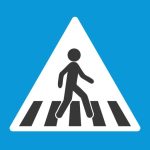Is the Source of Addiction Self-Punishment?

People say they are “addicted” to a behavior or substance or person or thing all the time, but they don’t mean it in a clinical sense. They often mean they can’t stop doing _______ fill in the blank. Clinical addiction, however, is not just liking to do something. It means doing that thing to the point of self-injury, wanting to stop, and feeling unable to stop. That is what true addiction feels like.
True addiction has an element of self-injury. The compulsive gambler knows their gambling is costing them. The compulsive drinker knows their drinking is dangerous. The opioid abuse patient knows their drug use is making them sick. But they can’t stop. Most people can. Most people can step to the edge of the abyss of addiction, assess the costs, and say, “I don’t think so.” They back down before they let it take over.
Some people — roughly 1 in 10 daily drinkers, according to the Centers for Disease Control — suffer from alcohol use disorder (AUD) and need help to stay out of the abyss. Genetics account for half of those who cross the line to AUD. What about the other 50%? One thing they may have in common is a desire to injure themselves. They step to the edge and say, “Bring it on.” They see self-injury as a feature, not a bug, in the parlance of software developers.
The science of addiction says the desire to engage in addictive behavior or substances comes from a desire to quell feelings of dissatisfaction, if only momentarily. The simplest formulation of this is physical pain. The desire for the painkiller comes from its ability to relieve pain, even momentarily. The mind remembers how you felt when the pain went away and associates that feeling with the painkiller, not with the pain relief.
The same is true for psychological pain, such as anxiety and depression, which is temporarily relieved through compulsive behaviors such as gambling, shopping, drinking, eating, smoking, running, pacing, and many unusual obsessions. All of these compulsions cause an anticipatory high — a rush of dopamine — just thinking about the behavior.
It is a learned high, because the mind remembers how wonderful it felt when the painful thoughts stopped. The mind associates that euphoria with compulsive behavior. This is the moment of displacement, where the build-up of stress is discharged through the behavior, and the cycle starts again.
Here’s where it crosses the line, however: When you can’t feel the euphoria until it’s killing you. You must renew the pain in order to feel the relief. The fact that it’s bad for you is part of the enjoyment of self-punishment. The gambler has to lose to make winning feel triumphant. The smoker reminds themselves of personal failure every time they light up. The compulsive eater must snack in order to continue feeling unattractive. No pain, no gain.
Peter Michaelson, psychotherapist and author of the book, Freedom From Self-Sabotage: How to Stop Being Our Own Worst Enemy, basically says we need to fail at abstinence in order to satisfy the relentlessly self-critical voice in our heads. In an article on his website, WhyWeSuffer.com, Dr. Michaelson writes,
The dynamics of our psyche require us to experience repeatedly our unresolved negative emotions, however painful.
Dr. Michaelson’s late wife, Sandra Michaelson, is the author of LoveSmart: Transforming the Emotional Patterns that Sabotage Relationships, which was published in the same year as Freedom from Self-Sabotage (2017). They form a nice set of husband-and-wife books on overcoming self-sabotage. Both psychotherapists discuss our need to fail as a self-fulfilling prophecy. The gambler needs losses just as much as the drug addict needs self-loathing to be able to continue their obsessions.
Part of the treatment for addictive behaviors is to systematically eliminate the causes of stress that make self-defeating behavior look so attractive. This is not so easily done, as both authors recommend depth psychology to unlock the sources of the need for self-punishment. Once the patient understands how this self-critical voice works, the patient and caregiver can devise methods to foil it.
It is the need to retrain the psyche that is behind much of the cognitive behavioral therapy (CBT) that is the cornerstone of Medically-Assisted Therapy (MAT), the Twelve Steps, addiction treatment apps, and almost all addiction treatment programs. In the case of BrainWeighve, the eating addiction app from eHealth International, publishers of AddictionNews, patients and therapists first set up a list of dreaded situations that generate stress. Then, they make a variety of plans for ways to cope without eating. They gradually withdraw from problem foods one at a time. The app offers a half-dozen ways to get instant support when faced with a crisis of willpower.
BrainWeighve is part of a UCLA clinical trial for overweight teens in the Los Angeles area. If you know someone who you are concerned may want to hurt themselves, the SAMHSA hotline is +1-800-662-HELP or +1-800-662-4357. SAMHSA is the Substance Abuse and Mental Health Services Administration and they maintain a resource page on self-injury at https://www.samhsa.gov/mental-health/self-harm.
Written by Steve O’Keefe. First published August 20, 2024.
Sources:
“Problem Gamblers are Addicted to Losing,” WhyWeSuffer.com, October 27, 2011.
“Healing ourselves: How to resolve our inner conflicts and use our power for good,” Leading Consciously, August 30, 2022.
“Heavy Drinking Among U.S. Adults, 2018,” Centers for Disease Control, August 2020.
“Managing shame and guilt in addiction: A pathway to recovery,” Addictive Behaviors, September 2021.
Image Copyright: natallik.




